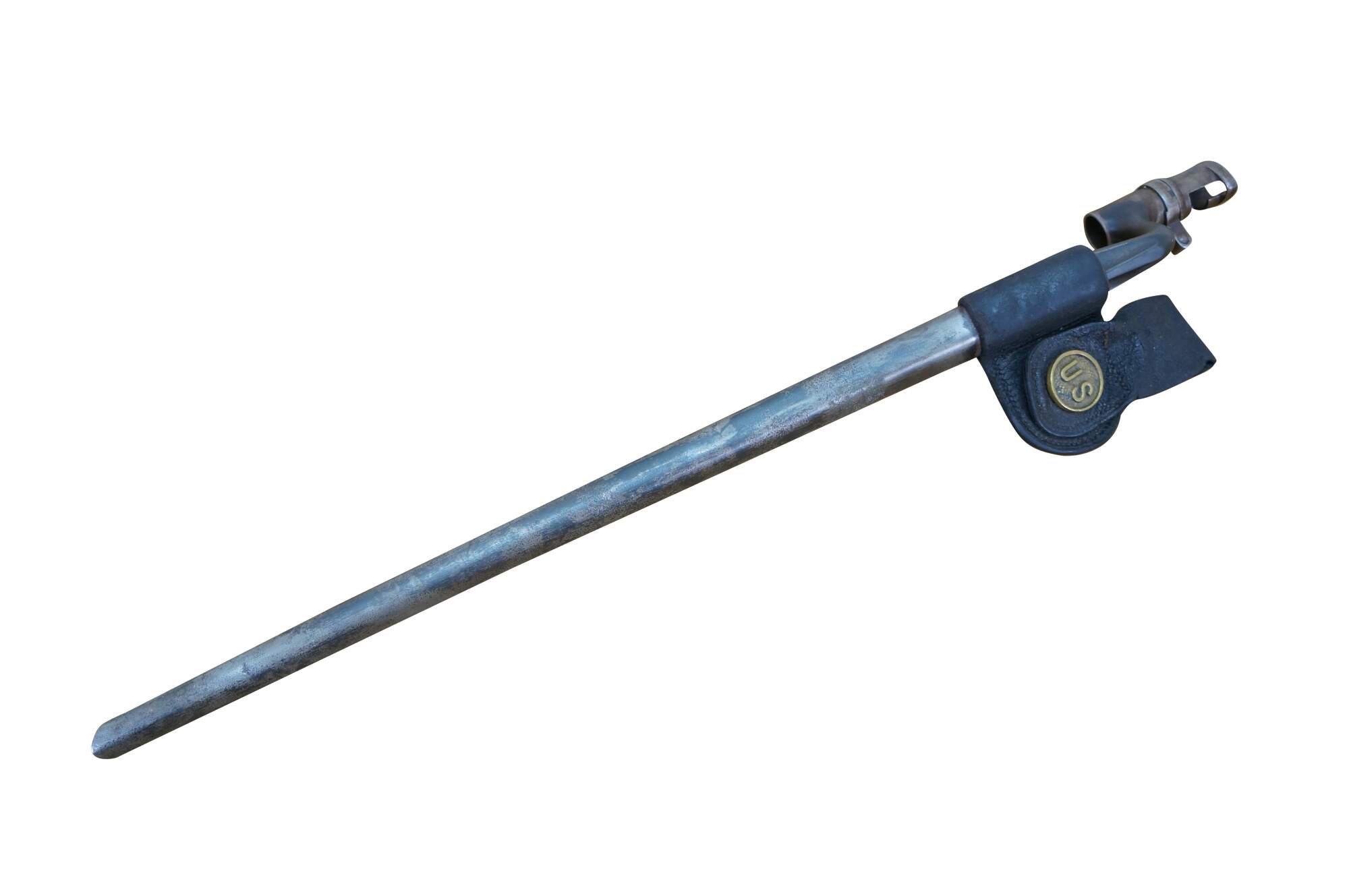
Shipping:
Free Shipping Included
Delivery:
Estimated 2-15 Business Days
Payments:
Credit Card, Check, Cash, PayPal, Apple Pay, Venmo
Returns:
30 Days 100% Money Back Guarantee, Buyer Pays Return Shipping
Description
Late 19th century United States military socket bayonet for the Trapdoor Springfield M1873 rifle. Slim, tapered triangular blade with a slightly upturned tip. Metal scabbard with black leather frog and brass US button. No stamp on ricasso.
"A bayonet (from Old French bayonette, now spelt baïonnette) is a knife, dagger, sword, or spike-shaped melee weapon designed to be mounted on the end of the barrel of a rifle, carbine, musket or similar long firearm, allowing the gun to be used as an improvised spear in close combat. Early bayonets were of the "plug" type, where the bayonet was fitted directly into the barrel of the musket. The major problem with plug bayonets was that when attached they made it impossible to fire the musket, requiring soldiers to wait until the last possible moment before a melee to fix the bayonet. The defeat of forces loyal to William of Orange by Jacobite Highlanders at the Battle of Killiecrankie in 1689 was due (among other things) to the use of the plug bayonet. The Highlanders closed to 50 yd (46 m), fired a single volley, dropped their muskets, and using axes and swords quickly overwhelmed the loyalists before they had time to fix bayonets. Shortly thereafter, the defeated leader, Hugh Mackay, is believed to have introduced a socket bayonet of his own invention. Soon "socket" bayonets would incorporate both socket mounts and an offset blade that fit around the musket's barrel, which allowed the musket to be fired and reloaded while the bayonet was attached. By the mid-18th century, socket bayonets had been adopted by most European armies. In 1703, the French infantry adopted a spring-loaded locking system that prevented the bayonet from accidentally separating from the musket. A triangular blade was introduced around 1715 and was stronger than the previous single or double-edged model." (Wikipedia)
Condition
Good Overall - Gentle wear/discoloration to leather; tarnish/some rusting to metal
Dimensions
22" x 3.25" x 2" (Width x Depth x Height)
You May Also Like